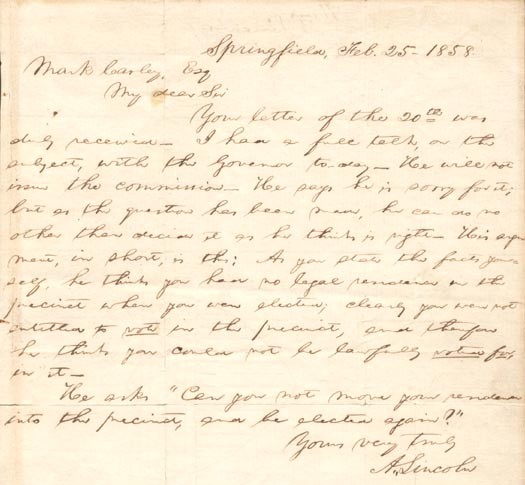Abraham Lincoln
"Abraham Lincoln practiced law in Champaign County for many years and was well acquainted with many of the first settlers. One day in 1857 while in Urbana and before he became famous, he went to a gallery to have his picture taken. He was in his shirt sleeves and the artist loaned him his coat to sit for the picture. The picture shows the great emancipator as he looked when he was a western lawyer residing quietly in Springfield, Illinois and practicing law here and in other counties. It is the only engraving of Mr. Lincoln which shows him as he was before he became famous in the history of the world."
"Up to or about the beginning of the Civil War our courts were literally circuit courts, for not only the judges, but the bar of each circuit, passed from county to county during the seasons for holding the courts. Up to 1852, this county possessed but one lawyer, and for much of the time none. The legal business of the county was, therefore, transacted by foreign attorneys, among whom were David Davis, late of the Supreme Court of the United States, now United States senator from Illinois; Abraham Lincoln, the "world's greatest and most illustrious son," Kirby Benedict, David B. Campbell, attorney general, and U. F. Linder.
"The first murder in this county for which there was a trial and conviction, was that known as the Weaver-Hiltibrau Murder. "On the 10th day of October, 1844, William Weaver, of Urbana, a miserable, drunken, reckless wretch, shot David Hiltibrau in the right side, with a rifle, without any apparent motive, except the fiendish recklessness that often attends men who have become besotted. He was arrested and indicted at the May term of 1845, by a grand jury, of which William D. Somers, Esq., was foreman, Judge Treat being on the bench, I. A. McDougal, attorney for the State, T. R. Webber, clerk, and William Lewis, sheriff.
"The following jurors tried the case: Joseph White, Harrison W. Drellinger, Alexander Walter, Henry Sadorus, W. H. Brobst, Charles W. Pitchan, David Hammer, John Hammer, John Mead, Winston Somers, Michael Finebaugh, and Wells Edgerton.
"On the opening of the trial, Abraham Lincoln, who became before his death "the foremost man of all the world," and Asahel Gridley, were appointed by the court to defend the prisoner, but his guilt was too well established during the trial to admit of any verdict but "Guilty," and William Weaver was accordingly sentenced to be hung on Friday, June 27th, 1845. A few days, however, before the day of execution, he made his escape from jail, fled to Wisconsin, and was never recaptured. He subsequently changed his name, reformed, and lived a decent life. His near view of the gallows seems to have somewhat revolutionized him and put him on his good behavior."
"It was in Champaign County, on a February day in 1861, that President-Elect Abraham Lincoln made his last speech to the people of Illinois before assuming the office of President a month later. That brief address was delivered in the park at Tolono, Illinois." From History of Champaign County, Illinois with Illustrations, 1878.
From This is Champaign County, Illinois, by John Drury, The American Aerial County History Series, No. 3, published by the Loree Company, 1954.
Copy of a letter written by Abraham Lincoln to Mark Carley. It appears that Lincoln intervened for Carley concerning an election. However, it was decided that Carley was not a resident of the precinct in question and the election results were nullified.
This information is Courtesy of the Lincoln Memorial Shrine of Redlands, California via Richard A. Hanks, Associate Archivist of the A. K. Smiley Public Library.
